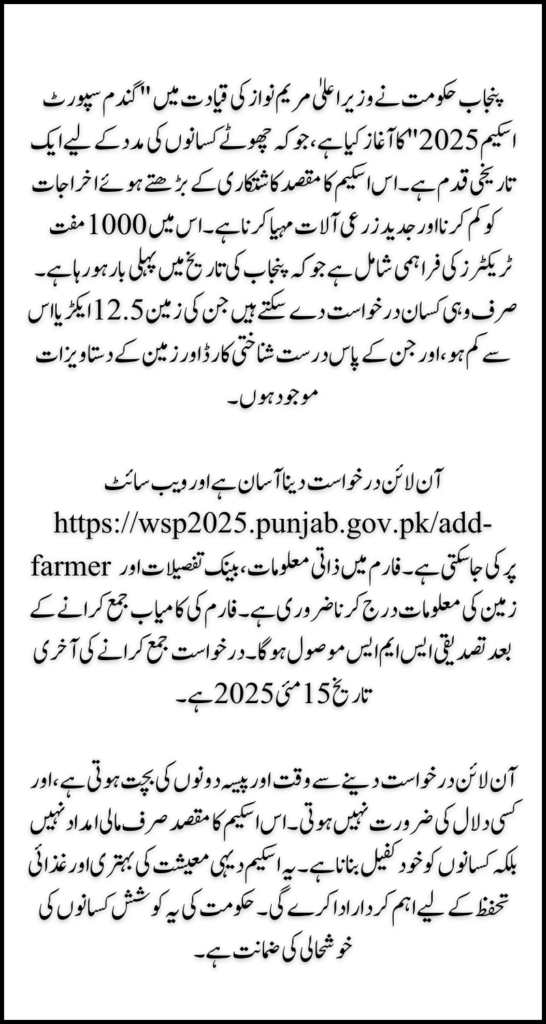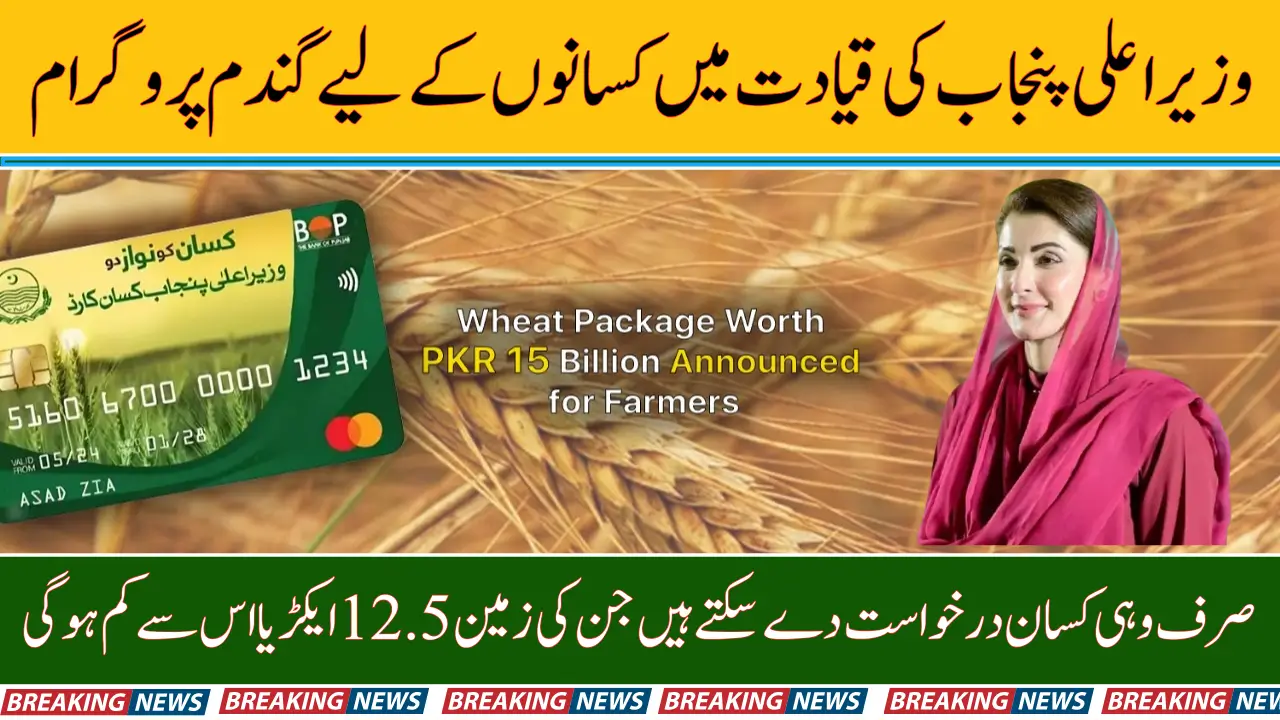Punjab Wheat Support Scheme 2025: The Punjab Wheat Support Scheme 2025 is a groundbreaking step by the Government of Punjab under the leadership of Chief Minister Maryam Nawaz to support small farmers and uplift the agricultural sector. With rising input costs and the need for modern farming tools, this scheme is a lifeline for wheat growers across the province.
You can also read: CM Punjab Has Started Distributing Laptops Today for Talented Students
In this article, we’ll explain in simple language how to apply online, who’s eligible, and what benefits you’ll get from this historic initiative.
What is the Punjab Wheat Support Scheme 2025?
The Punjab Wheat Support Scheme is designed to help small-scale wheat farmers by providing financial assistance and modern agricultural equipment, including 1,000 free tractors a first in Punjab’s history.

The scheme aims to:
- Reduce the cost of wheat farming
- Promote modern and efficient agriculture
- Increase wheat production to ensure food security
- Support the rural economy and uplift farmer livelihoods
It’s more than just a subsidy — it’s a step toward building a self-sufficient and empowered farming community.
Who Can Apply? (Eligibility Criteria)
Not every farmer can apply. The scheme is focused on small and deserving farmers. Here’s who qualifies:
- Must be a resident of Punjab
- Can be a landowner or tenant farmer (Mazare-e-Ain)
- Total landholding must be 12.5 acres or less
- Must have a valid CNIC (Computerized National Identity Card)
- Land documents must be updated (ownership or tenancy)
You can also read: BISP Khanewal Payment Check Online 13500 Complete Procedure
How to Apply Online for the Wheat Support Scheme
The application process is simple and can be completed online from the comfort of your home. Here’s a step-by-step guide:
Step 1: Visit the Official Website
Go to the scheme’s official page:
👉 https://wsp2025.punjab.gov.pk/add-farmer
Step 2: Enter Personal Information
- Full Name (as per CNIC)
- Father’s Name
- 13-digit CNIC Number
- Mobile Number (linked to your CNIC)
Step 3: Bank Details
- Choose your bank
- Enter your bank account number (must be linked with your CNIC)
Step 4: Land Details
- Select your Division, District, Tehsil, and Mauza
- Enter Khasra, Khewat, and Khatooni numbers
- Provide total land area and specify how much land is used for wheat cultivation
Step 5: Submit Your Application
- Double-check your details
- Click Submit
- You will receive a confirmation SMS once your application is successfully submitted and approved
Deadline to Apply
The last date to submit your application is:
📅 May 15, 2025
✅ Apply early to avoid last-minute technical issues or website delays. Early submission also helps ensure a faster response and approval.
Benefits of Applying Online
Here’s why applying online is the best way to register:
- No need to visit offices or stand in lines
- Easy, fast, and paperless process
- Direct payments and benefits through bank accounts
- No middlemen or agents needed
- Transparent and secure process
Common Mistakes to Avoid
To make sure your application is accepted, avoid these errors:
- Typing the wrong CNIC or account number
- Using a mobile number not registered with your CNIC
- Submitting incorrect land data or outdated documents
- Waiting until the last day to apply
Where Can You Get Help?
If you need assistance with your application, you can:
- Visit your nearest Agriculture Department office or tehsil center
- Talk to your local agriculture officer
- Use the contact info available on the official website
You can also read: BISP 13500 Payment Notifications May 2025 How to Check Details Online
Conclusion
The CM Punjab Wheat Support Scheme 2025 is more than just free tractors and cash support. It’s about changing the future of farming in Punjab — making it modern, efficient, and profitable. Whether you own land or are a tenant farmer, this scheme is your chance to improve your harvest and income.
“Khushhal Kisan, Khushhal Punjab” isn’t just a slogan — it’s a commitment to a better tomorrow for every farmer.
So don’t wait. Apply now and take the first step toward a more productive and secure farming future.
